THE STORY
The appropriate use of sounds has the potential to add a great deal to convey information in interactive commodities. However, sound is a largely unexplored medium as a design element in interaction design community.
MY ROLE
This project was submitted to the School of Design, Carnegie Mellon University for the degree of Master of Design in Interaction Design. This was an individual project with Dan Boyaski as an advisor in School of Design faculty.
I was responsible for the user research, concept design, interaction design, visual design and sound design.
THE QUESTION
HOW DO WE TRANSLATE SOUNDS AS INFORMATION, AND HOW WE DESIGN BETTER WITH SOUND FOR MORE EFFECTIVE COMMUNICATION
Sound and vision are not only complementary to each other, but also convey different types of information. In general, auditory display has the potential to convey information that is difficult to display visually. Sound can provide information about events without visual attention, and about events that are obscured or difficult to visualize. In addition, visual complexity can be reduced by using sound that represent alternative means for information.
THE RESEARCH
DEEP IN THE LITERATURE
During the last 15 years, there have been many explorations to represent
information through sound. Those projects span diverse topics including
visual aid for visually impaired persons, auditory representation of sound
and artistic sonic interaction design. I explored those diverse topics
to acquire general knowledge regarding how sound is being used and
investigated what are common patterns of sound for informative purpose.
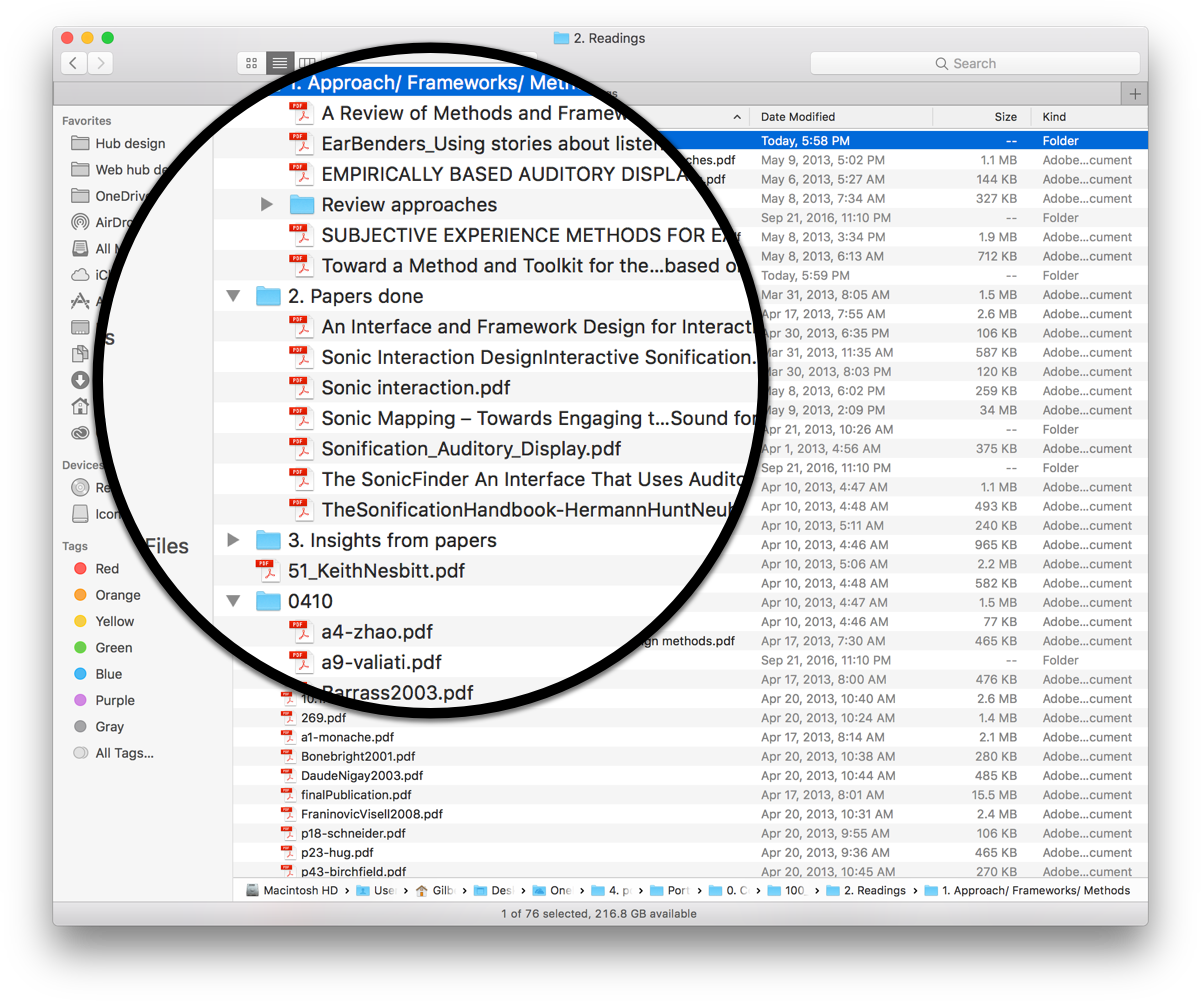
UNDERSTANDING
HOW DO WE PERCEIVE AND UNDERSTNAD SOUND?
By analyzing sound decoding process, the questions of “How the sound can enhance visual contents” become clearer. Here are the design questions involved in each phase.
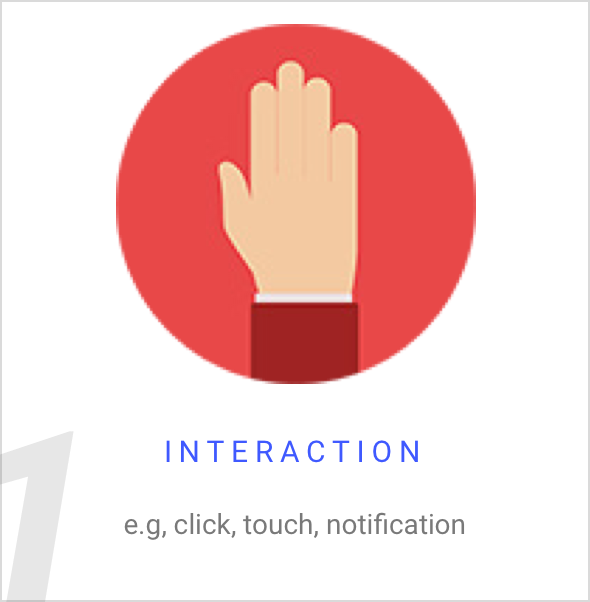
When should sound be generated?
What kinds of interactions are more appropriate to use sound than visual element?
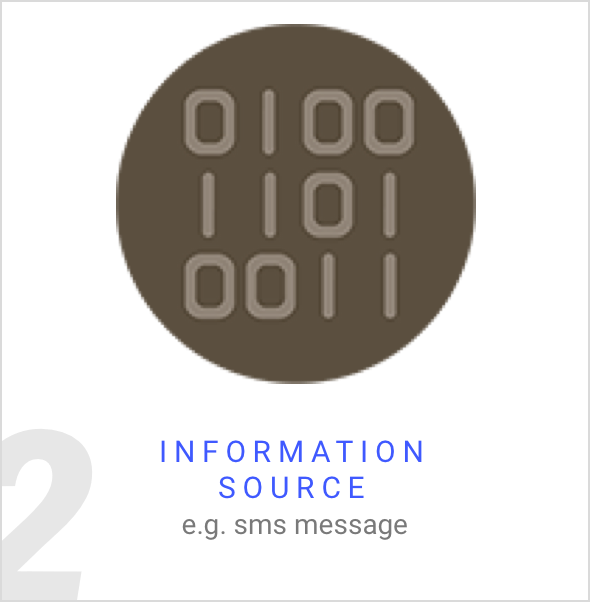
What kinds of information are appropriate to be represented as sound form?

What attributes of sound are recognizable to people? How people perceive different parameters of sound?
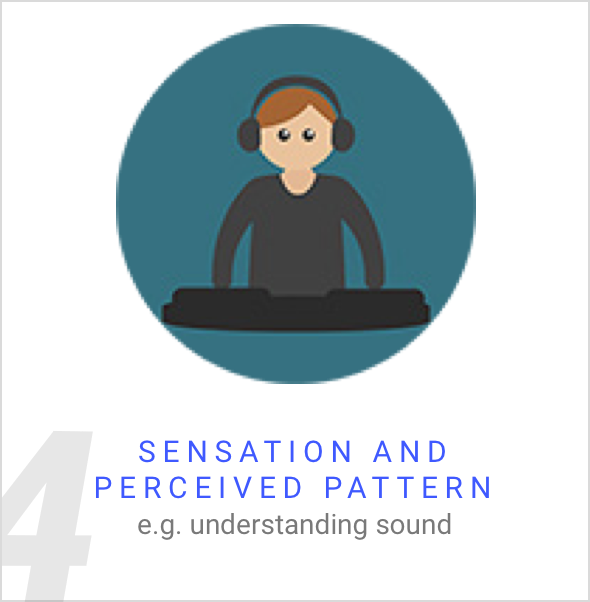
What type of information could be meaningful to the user? How we increase an accuracy of sound?
UNDERSTANDING
WHERE ARE SOUNDS?
Given the number of rigorous research studies, I focused on categorizing general functions of sound. This helps my research identify where sound interaction is more effective than visual content. As an outcome of this phase, functions of auditory displays can be categorized into the following four broad categories:
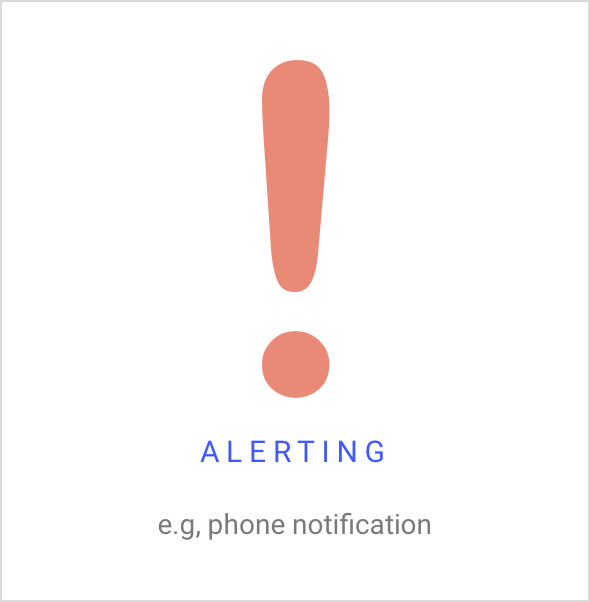
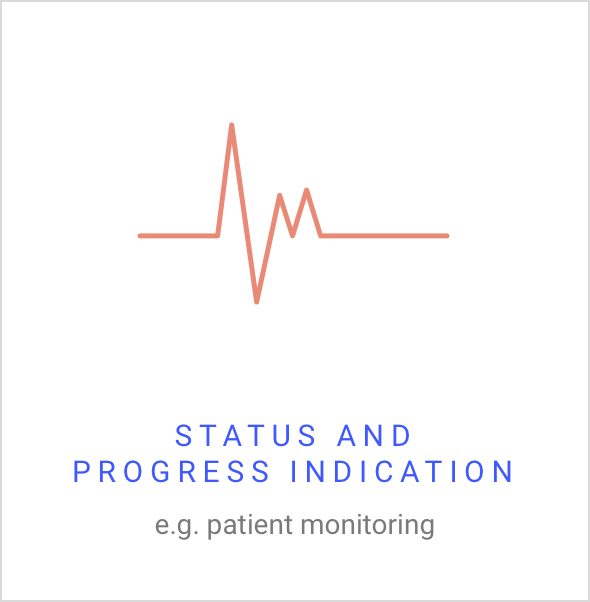
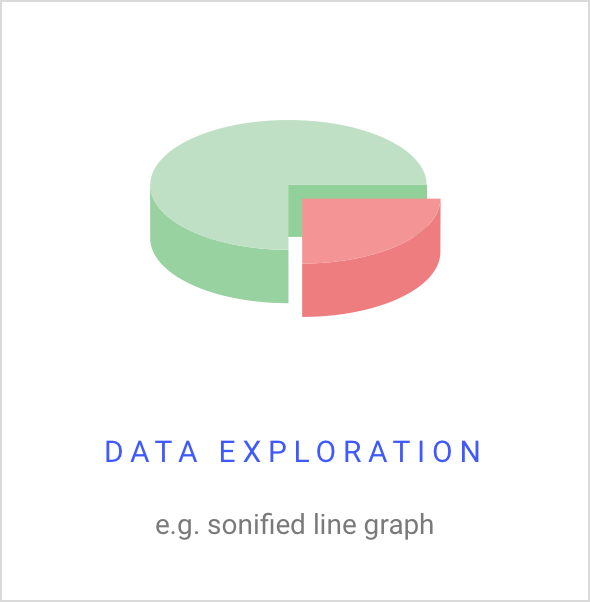
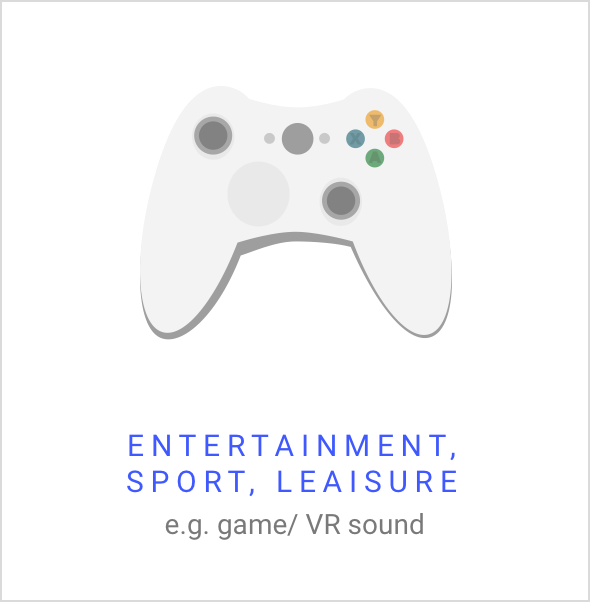
THE EXPLORATION
PARTICIPATORY WORKSHOP: TO FIND WHEN SOUND BECOMES MEANINGFUL
My literature review and existing project research heavily looked at the theoretical perspective, not with actual usage. Examination of research findings was necessary for identifying practical aspects. For this end, I conducted a participatory design workshop with six participants, which allowed not only generating new design concept and further insights but also validating research findings.
Goal of the design workshop
– When is the multi-modal interaction can be effective?
– How can I design the effective sound?
– Validation of my research findings
Participants
– 7 participants
– 3 designers
– 1 design researcher
– 2 musician
– 1 Sound designer
Tasks of design workshop
– Total workshop time: half day
– Affinity diagram activity(1h)
– Translate sound to abstract visual(1.5h)
– Design sound by using sound samples(1.5h)
THE SYNTHESIS AND FINDINGS
FRAMEWORK OF VISUAL AND AUDITORY CONSIDERATION
Designers can use the framework in concept generation phase to find opportunities of using sound to represent information and generate kinds of interaction and experience that sound design might offer. Once the designer decides sound can have a potential for their design, actual sound design and usability test should be iterated to investigate if intended communication is smooth and natural.
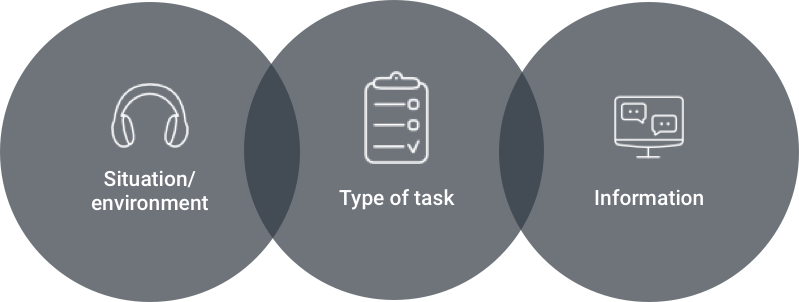
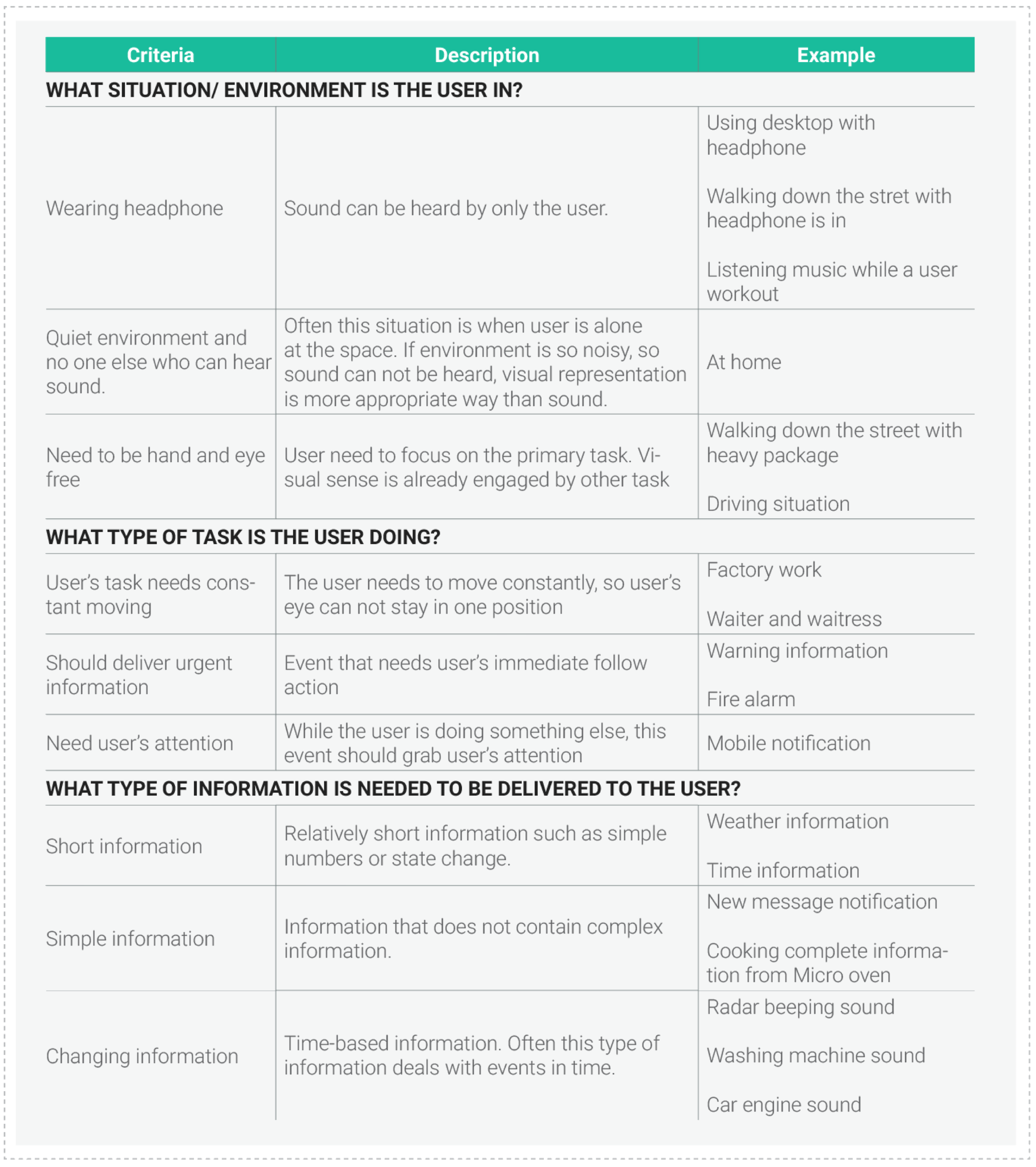
THE VISION
GIVE GUIDANCE THAT HELP DESIGNERS USE SOUND IN THEIR DESIGN
Designers seeking to use sounds should learn about the most basic sound interaction’s characteristics and potentials of the sound interaction by answering the following questions. What are the issues in the context when and where the sound will be generated? How can sounds improve the user’s current experience? Will the sound be easily adaptable, learnable? Answers to these questions should be found from an objective perspective to the user’s experience and interaction
SOUND DESIGN GUIDANCE
SIX PRINCIPLES
The nature of data to be presented and the task of the users are important factors for a system that employs sound as a medium of communication. When sound becomes designers’ consideration for more effective communication, designers need to consider those implications described below.
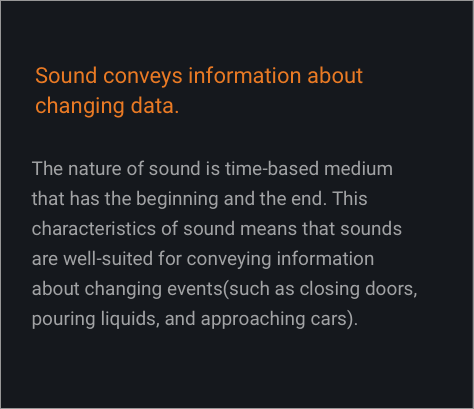
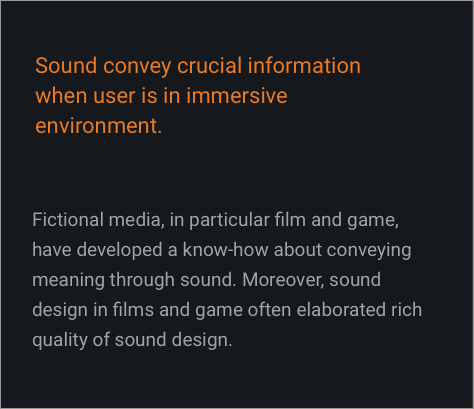
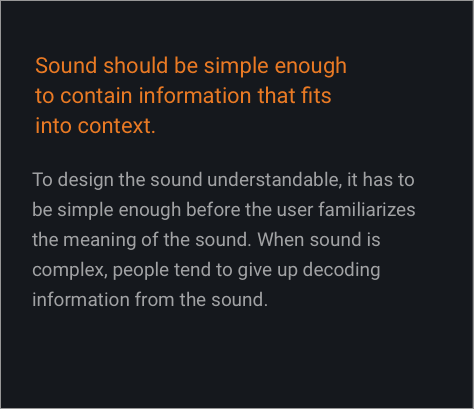
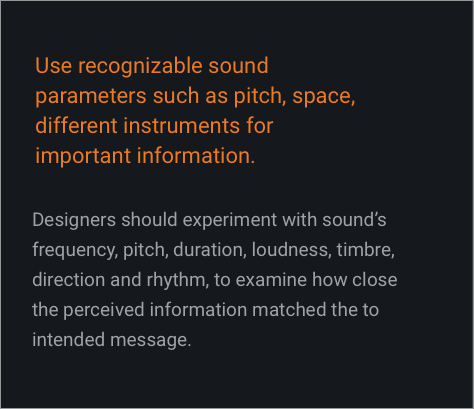
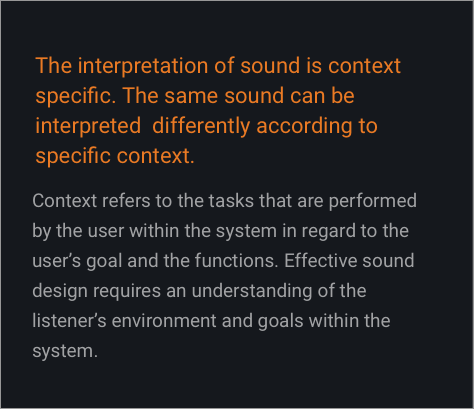
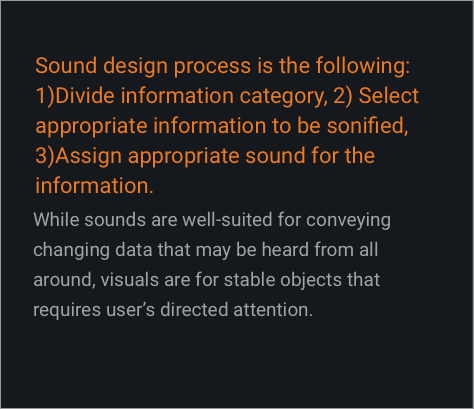
SOUND DESIGN GUIDANCE
SOUND DESIGN FLOW CHART FOR DESIGNERS
This sound design guidance focus on clarifying essential questions. So it starts with the context of sound design, what is the sound for. By simply answering each question, the designer can get a rough guidance for their project.

